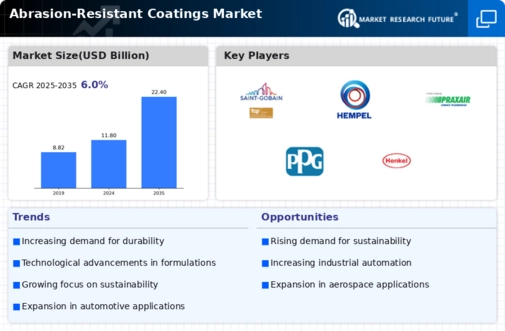Abrasion Resistant Coatings Market Summary
As per Market Research Future Analysis, the abrasion-resistant coatings market is projected to expand to USD 11.8 Billion at a growth rate of over 6% during the forecast period. These coatings are essential for reducing surface wear in environments unsuitable for lubricants, such as high-temperature and radioactive settings. They are widely used in industries like oil & gas, marine, power generation, transportation, and construction. The demand for eco-friendly products and stringent regulations on VOC emissions are driving market growth, despite high capital investment being a restraint. The coatings are primarily made from materials like tungsten carbide and chrome oxide ceramics, which provide durability and protection against wear and corrosion.
Key Market Trends & Highlights
The abrasion-resistant coatings market is witnessing significant growth driven by industrial demands and environmental considerations.
- Market size projected to reach USD 11.8 Billion by the end of the forecast period.
- Growth rate expected to exceed 6% during the forecast period.
- Europe is the largest regional market, driven by transportation and power generation industries.
- Asia-Pacific is the fastest-growing region due to rapid industrialization and urbanization.
Market Size & Forecast
| Market Size | USD 11.8 Billion |
| Growth Rate | Over 6% |
| Largest Regional Market | Europe |
Major Players
Key companies include Akzo Nobel NV, Saint-Gobain, Jotun A/S, The Sherwin-Williams Company, and PPG Industries.















